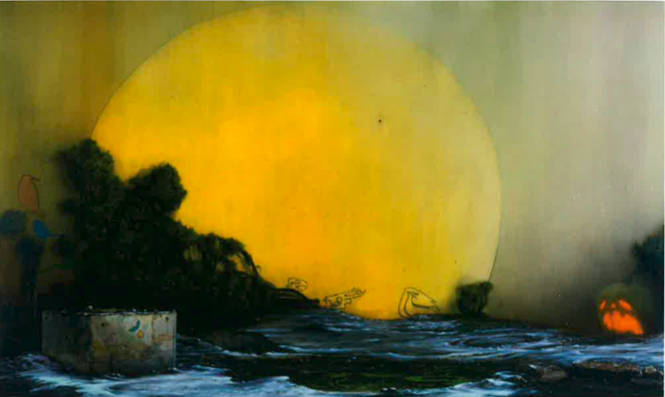Yto Barrada A Life Full of Holes: The Strait Project
September 2006
On first viewing, the image appears to be an eccentric map of an uncharted world. The filigree-like coastlines of these unfamiliar islands are realistically defined and clearly delineated, whilst the land mass – albeit in a reversal of traditional maps – is a clear-blue aquamarine. Study the picture further, however, and this inverted map resolves into something other than it first appeared to be. As to what that something else is, there is still some doubt until we read the accompanying title: Container 1 – Rust holes in the top of a shipping container – Tangiers (2003). The blue of these ‘regions’ is in fact the colour of a sky seen from the inside of a rusting shipping container; a corralled sky not so much boundless as claustrophobic. The photograph, now less visually ambiguous, becomes an illustration of confinement and restriction rather than exploration or travel. And it is between these two often reciprocal poles – stasis and movement – that Yto Barrada’s photographs address the state of conditional ennui that pervades Tangiers, a city both the nodal point for the illegal passage of Africans entering Europe and stagnation for those who remain there. (more…)

